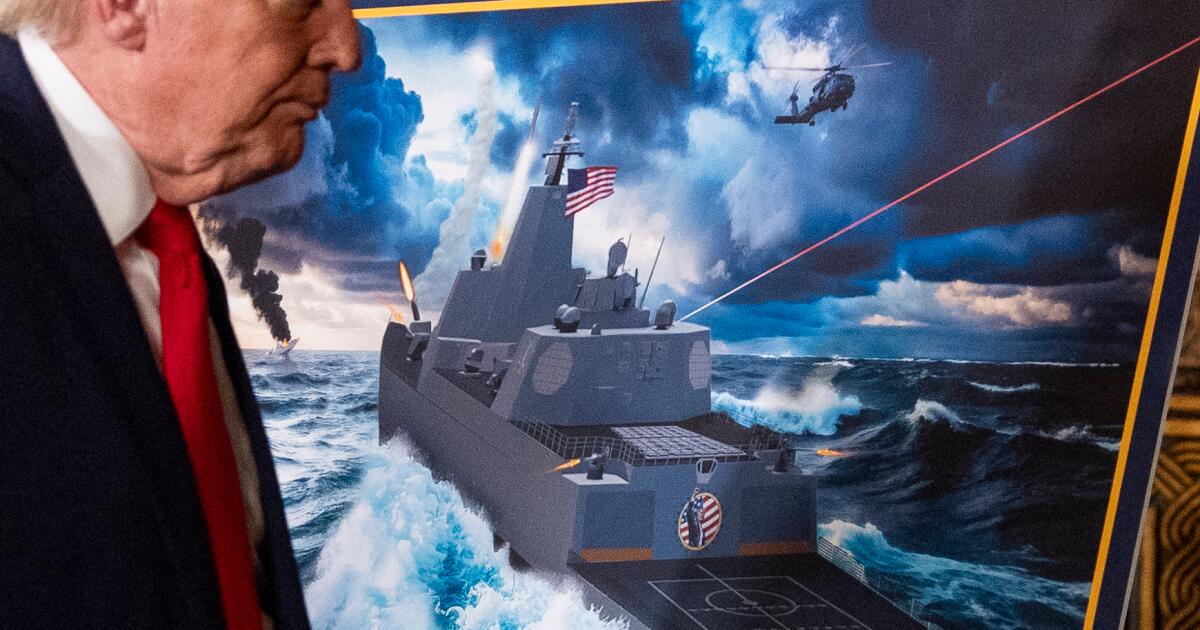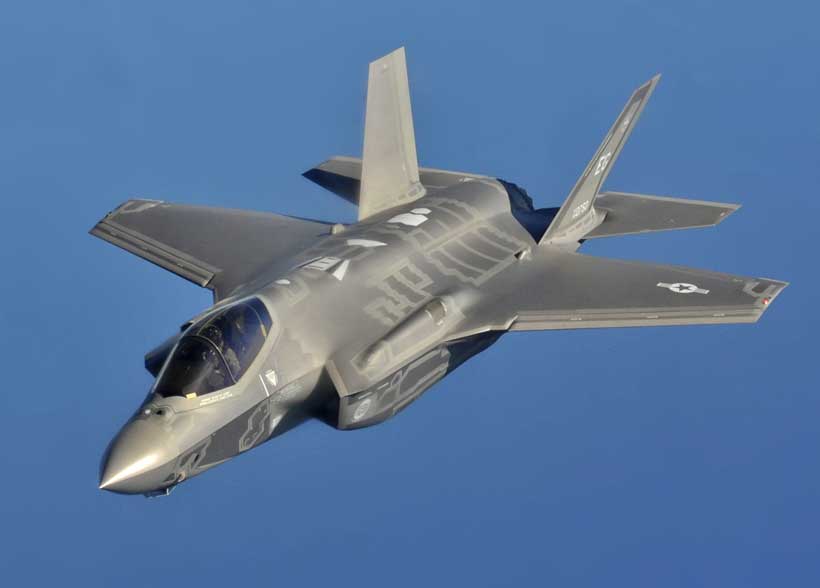Trump announces plans for new Navy ‘battleship’ as part of a ‘Golden Fleet’
WASHINGTON — President Trump has announced a bold plan for the Navy to build a new, large warship that he is calling a “battleship” as part of a larger vision to create a “Golden Fleet.”
“They’ll be the fastest, the biggest, and by far 100 times more powerful than any battleship ever built,” Trump claimed during the announcement at his Mar-a-Lago resort in Florida.
According to Trump, the ship, the first of which will be named the USS Defiant, will be longer and larger than the World War II-era Iowa-class battleships and will be armed with hypersonic missiles, nuclear cruise missiles, rail guns, and high-powered lasers — all technologies that are in various stages of development by the Navy.
The announcement comes just a month after the Navy scrapped its plans to build a new, small warship, citing growing delays and cost overruns, deciding instead to go with a modified version of a Coast Guard cutter that was being produced until recently. The sea service has also failed to build its other newly designed ships, like the new Ford-class aircraft carrier and Columbia-class submarines, on time and on budget.
Meanwhile, the Navy has struggled to field some of the technologies Trump says will be aboard the new ship.
The Navy spent hundreds of millions of dollars and more than 15 years trying to field a railgun aboard a ship before finally abandoning the effort in 2021.
Laser technology has seen more success in making its way onto Navy ships in recent years, but its employment is still limited. One system that is designed to blind or disable drone sensors is now aboard eight destroyers after spending eight years in development.
Developing nuclear cruise missile capabilities or deploying them on ships may also violate non-proliferation treaties that the U.S. has signed with Russia.
A U.S. official, who spoke on condition of anonymity to discuss ongoing plans, told the Associated Press that design efforts are now underway for the new ship and construction is planned to begin in the early 2030s.
Both Trump and Navy Secretary John Phelan spoke about the new Trump-class warship as a spiritual successor to the battleships of the 20th century, but historically that term has referred to a very specific type of ship — a large, heavily armored vessel armed with massive guns designed to bombard other ships or targets ashore.
This type of ship was at the height of prominence during World War II, and the largest of the U.S. battleships, the Iowa-class, were roughly 60,000 tons. But after World War II, the battleship’s role in modern fleets diminished rapidly in favor of aircraft carriers and long-range missiles. The U.S. Navy did modernize four Iowa-class battleships in the 1980s by adding cruise missiles and anti-ship missiles, along with modern radars, but by the 1990s all four were decommissioned.
According to a newly created website for the “Golden Fleet,” this new “guided missile battleship” is set to be roughly the same size as Iowa-class battleships but only weigh about half as much, around 35,000 tons, and have far smaller crews — between 650 and 850 sailors.
Its primary weapons will also be missiles, not large naval guns.
Trump has long held strong opinions on specific aspects of the Navy’s fleet, sometimes with a view toward keeping older technology instead of modernizing.
During his first term, he unsuccessfully called for the return to steam-powered catapults to launch jets from the Navy’s newest aircraft carriers instead of the more modern electromagnetic system.
He has also complained to Phelan about the look of the Navy’s destroyers and decried Navy ships being covered in rust.
Phelan told senators at his confirmation hearing that Trump “has texted me numerous times very late at night, sometimes after one (o’clock) in the morning” about “rusty ships or ships in a yard, asking me what am I doing about it.”
On a visit to a shipyard that was working on the now-canceled Constellation-class frigate in 2020, Trump said he personally changed the design of the ship.
“I looked at it, I said, ‘That’s a terrible-looking ship, let’s make it beautiful,’” Trump said at the time.
He said Monday he will have a direct role in designing this new warship as well.
“The U.S. Navy will lead the design of these ships along with me, because I’m a very aesthetic person,” Trump said.
Phelan said the new USS Defiant “will inspire awe and reverence for the American flag whenever it pulls into a foreign port.”
Toropin and Madhani write for the Associated Press.

